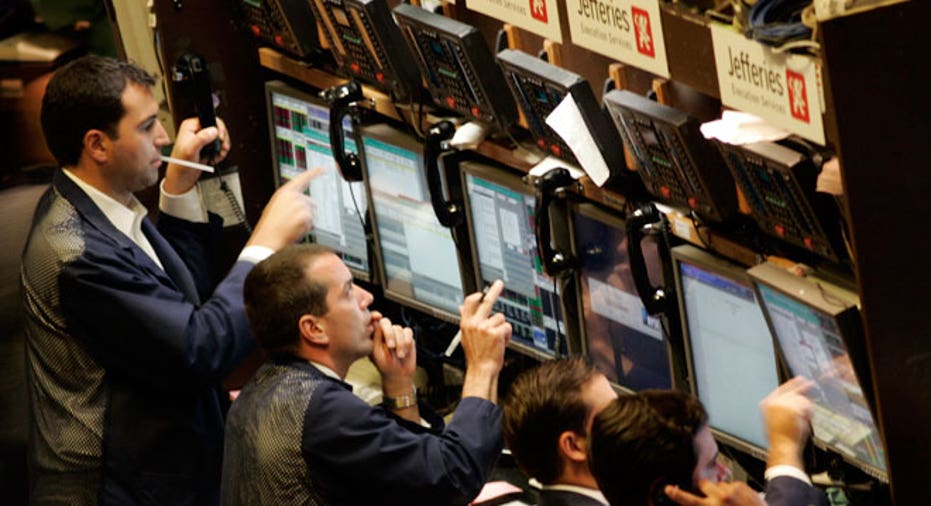Bleak Jobs Report Confirms U.S. Stuck in Slow-Growth Environment

The gloomy March payroll report released Friday morning delivered the clearest evidence yet that the U.S. economy still hasn’t reached escape velocity.
The weakest jobs report since June 2012 also deals a blow to talk of an early exit by the Federal Reserve, which appears poised to keep its foot firmly planted on the easy-money gas pedal.
“We’ve seen this time and time again in this recovery. We’ve seen stronger data and then a softening. The economy has yet to shift into a higher gear and stay there,” said Josh Feinman, global chief economist at Deutsche Bank’s (NYSE:DB) DB Advisors.
While the jobs report was unmistakably negative -- it missed consensus expectations by a whopping 112,000 jobs -- other recent indicators on consumer spending and housing reinforce the notion that the U.S. economy continues to improve, just at a tediously slow pace.
“Just as it’s a mistake to extrapolate out the stronger data earlier this year, I think it’s also a mistake to get too negative on these data,” said Feinman.
Ugly Jobs Report
U.S. stocks suffered a triple-digit retreat Friday morning immediately following the release of the jobs report, which showed the U.S. created just 88,000 nonfarm jobs in March, 56% below the Street’s view of 200,000.
Private-sector payrolls increased by just 95,000 jobs, or about 100,000 fewer than had been forecasted. And the unemployment rate dipped to 7.6% from 7.7%, but only because the labor force continued to fall.
“The report will fan fears that we will once again see a slowdown in job creation after a strong start to the year, as in 2011 and 2012,” Nigel Gault, chief U.S. economist at IHS Global Insight, wrote in a note. “With the impact of the sequester yet to be felt, hopes that the economy could sustain a 200,000-plus monthly job creation rate will have to be deferred until 2014.”
However, the report did contain a few silver linings, including revisions to the prior two months that added 61,000 jobs collectively to nonfarm payrolls, lifting February’s growth to a stellar 268,000.
“Our view is that the February employment report overstated strength in the labor market, and the March report likely overstates any weakness,” Michael Gapen, director of U.S. economic research at Barclays (NYSE:BCS), wrote in a note.
Russell Price, senior economist at Ameriprise Financial (NYSE:AMP), said expectations likely got out of whack due to the stronger-than-expected data earlier this year.
“I don’t really think it changes all that much. Is it disappointing? Absolutely,” said Price, but “there was some giveback expected for March.”
Back to Square One
So where does that leave the economy in the aftermath of the March jobs dud? Probably right back to where it started: with sluggish growth of around 2%.
“I think the headwinds holding back this recovery are diminishing. But it’s not a straight line and there are other things complicating it,” said Feinman. “While it’s hard to see with all the noise, there has been some progress with working off the excesses of the bubble era.”
There are clear signs of improvement on the consumer front, despite hurdles like the payroll tax hike that came out of the fiscal-cliff compromise.
The Reuters/University of Michigan gauge of consumer sentiment jumped to a stronger-than-expected reading of 78.6 in March from an earlier reading of 71.8 -- the largest upward revision on record.
Recent statistics from the Commerce Department show U.S. consumer spending increased at a steady pace of 0.7% in February from January, the largest one-month increase since September 2012. Personal income climbed 1.1%, topping forecasts.
“The consumer has been holding up quite better than expected, especially considering the payroll tax hike,” said Price. “Consumers are feeling a lot better because the value of their homes is rebounding and the stock market is improving.”
Fed Likely Staying Put
Thanks to the improvements on the consumer spending front and a huge build in inventories, Barclays raised its growth forecast on Friday for first-quarter GDP to 3.5% from 1.5%.
However, Barclays warned that growth is expected to slow in the second quarter to just 1.5% and 2% in the second half of the year, due in part to the fiscal tightening.
Economists will be watching March and April consumer data closely to see if the effects of the payroll tax hike weigh on spending patterns.
While the jobs report provoked a kneejerk selloff in the equities markets, it doesn’t appear that Wall Street needs to be worried about the Fed yanking the easy-money punch bowl that has supported stock prices anytime soon.
If anything, the March payroll figures bolster the case for the Fed’s policymakers to continue injecting $85 billion into the economy each month through the controversial quantitative-easing program.
“How many times have they seen this [seasonal slowdown] just like everyone else?” said Feinman. “They are not going to pull back until they are more convinced that this stronger growth is for real. A few months of it is not going to cut it.”